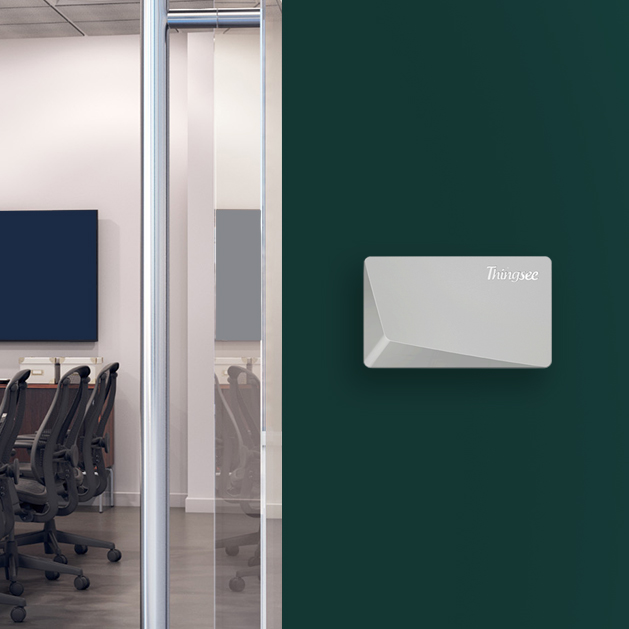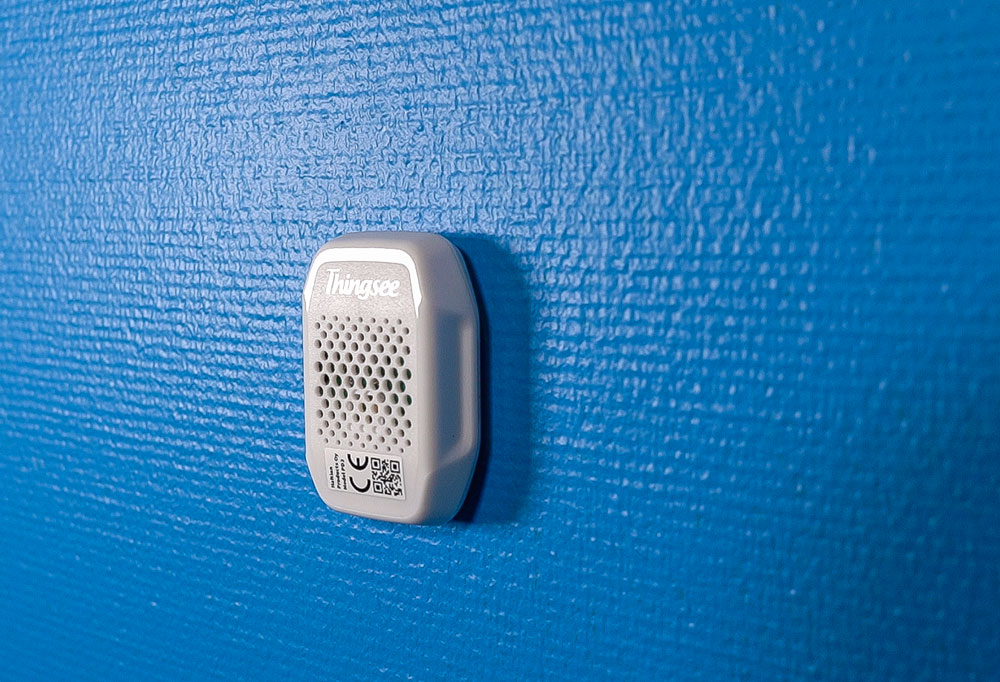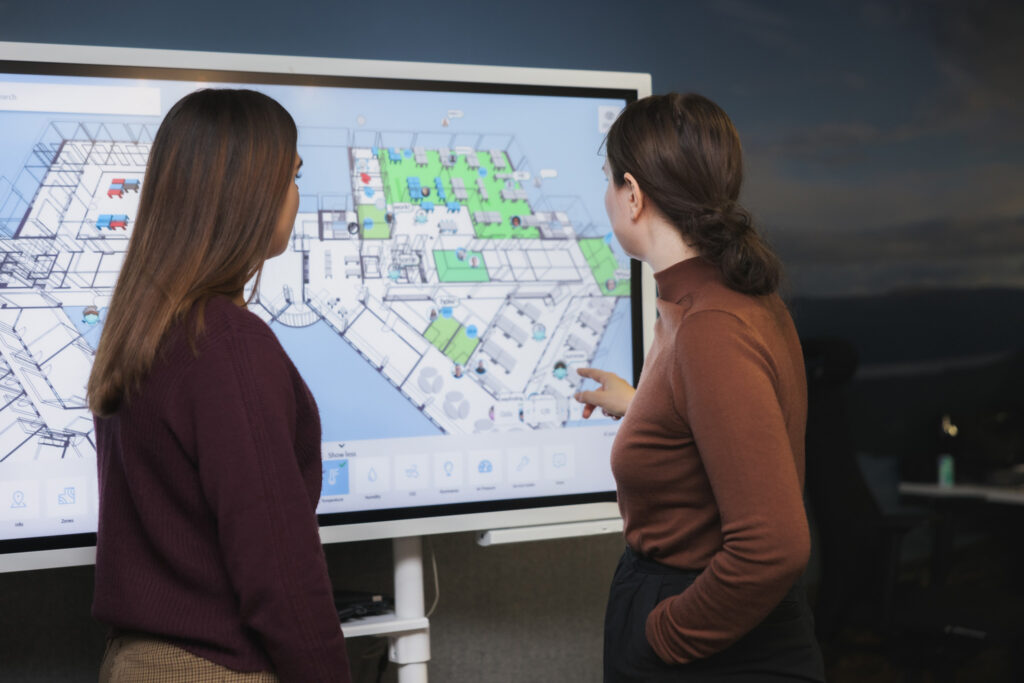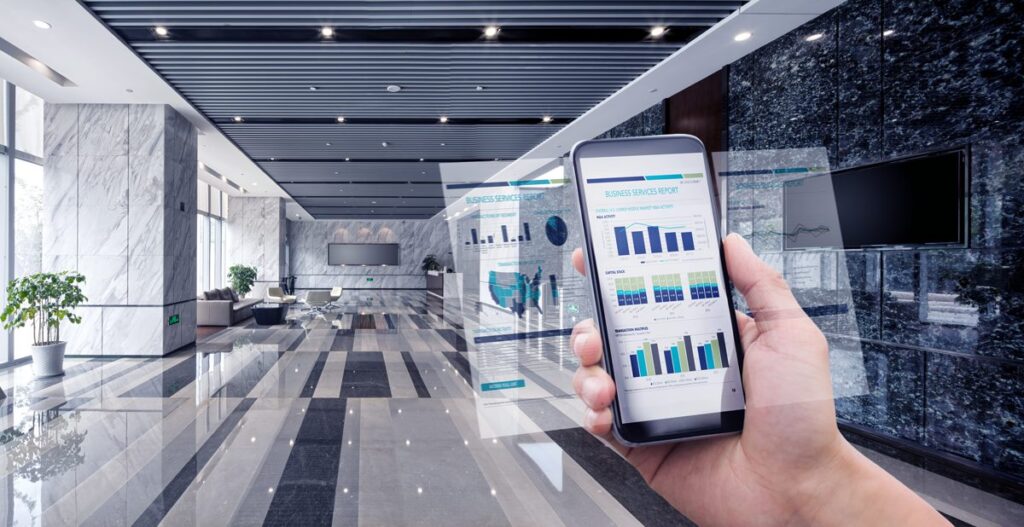
Ensuring OPtimal Air Quality and Comfort
Indoor Environment Monitoring
People spent more time indoors than ever before. According to the U.S. Environmental Protection Agency, we now spend about 90% of our time indoors. It’s no surprise, then, that the air we breathe indoors has become a major concern.
A key issue that has gained attention in recent years is indoor air quality and indoor environment monitoring, particularly in places where people spend long hours, like workplaces and schools. Problems such as headaches, eye irritation, and fatigue are often linked to poor indoor air quality. While concerns about the impact of indoor air on health, productivity, and overall well-being are common, the root causes of these symptoms are frequently unclear.
Why Indoor Environment Monitoring is Important
Compared to outdoor spaces, indoor spaces often have limited ventilation, making them more susceptible to pollutants and fluctuating environmental conditions. These factors can lead to poor air quality, uncomfortable temperatures, and imbalanced humidity levels. With indoor environment monitoring, you can easily track these parameters in real-time and take action to ensure healthier and more comfortable indoor spaces.

The Impact of Poor Air Quality
Air quality has a direct effect on health, cognitive function, and overall comfort. Pollutants like carbon dioxide (CO2), volatile organic compounds (VOCs), and particulate matter can accumulate indoors, leading to issues such as fatigue, headaches, respiratory problems, and worsened allergy symptoms. By monitoring air quality, you gain critical insights into pollutant levels and can make adjustments to improve ventilation or filtration as needed.
Temperature and Humidity: Comfort and Health
Indoor temperature and humidity are also key contributors to comfort. Temperature fluctuations can cause discomfort, affect productivity, and even lead to higher energy costs if not properly managed. Humidity control is equally important — air that’s too dry can irritate skin and respiratory systems, while overly humid conditions encourage the growth of mold and dust mites. Indoor environment monitoring helps you maintain balanced temperature and humidity levels for a healthier, more comfortable environment.

Benefits of Indoor Environment Monitoring
Monitoring your indoor environment goes beyond simple data collection. It empowers you to make informed decisions that improve air quality, regulate temperature, and maintain proper humidity levels. Here are some of the key benefits you can expect:
NO. 1
Enhanced Air Quality for Better Health
Continuous monitoring of indoor air quality helps ensure that pollutant levels stay within acceptable ranges. You’ll be able to detect harmful substances like CO2, VOCs, and airborne particles, allowing you to take immediate action when levels spike. This is particularly valuable for environments where vulnerable individuals, such as children or the elderly, spend significant amounts of time.
By addressing air quality issues, you can reduce health risks and create an environment that promotes well-being. Clean indoor air leads to better respiratory health, fewer allergy symptoms, and improved cognitive performance for employees or students.
NO. 2
Optimized Temperature Control for Comfort and Productivity
Nobody works well in an uncomfortable environment. Temperature extremes can make indoor spaces unbearable, impacting concentration and overall satisfaction. Indoor environment monitoring gives you control over temperature regulation, helping to maintain a consistently comfortable setting.
Moreover, optimized temperature settings can lead to energy savings. By ensuring heating and cooling systems only activate when necessary, you’ll reduce energy consumption and costs, all while maintaining a pleasant indoor climate.
NO. 3
Balanced Humidity Levels for Air Quality and Structural Protection
Proper humidity levels play a role in both human comfort and the longevity of your building. When humidity is too high, moisture can collect on surfaces, leading to mold growth, which can harm both health and infrastructure. On the other hand, low humidity levels can cause dry skin, irritated eyes, and static electricity.
Indoor environment monitoring systems track humidity levels, ensuring they stay within the ideal range. This not only improves air quality but also helps protect your building’s structural integrity by preventing moisture damage.
NO. 4
Real-Time Alerts and Long-Term Data
Proper humidity levels play a role in both human comfort and the longevity of your building. When humidity is too high, moisture can collect on surfaces, leading to mold growth, which can harm both health and infrastructure. On the other hand, low humidity levels can cause dry skin, irritated eyes, and static electricity.
With indoor environment monitoring, you gain access to real-time data on air quality, temperature, and humidity. This allows you to respond quickly to changes and make necessary adjustments. Some systems also provide historical data that can be analyzed over time, helping you identify trends and optimize your indoor environment even further.
NO. 5
Compliance with Health and Safety Standards
In many industries, maintaining good air quality and environmental conditions is required to comply with health and safety regulations. For example, schools, hospitals, and office buildings must meet certain standards to ensure the well-being of occupants. Indoor environment monitoring systems help ensure you stay compliant with these regulations, avoiding fines and ensuring a safe environment.
How Indoor Environment Monitoring Works
Indoor environment monitoring systems consist of various sensors placed throughout a building to measure air quality, temperature, and humidity levels. These sensors are typically connected to a platform that collects and analyzes the data, making it easily accessible via mobile or desktop devices.

Haltian Thingsee AIR
Air Quality Sensor
Air quality sensors measure pollutants like CO2 and TVOC, as well as temperature and humidity These sensors provide real-time data on air quality levels and can trigger alerts when any levels exceed safe thresholds. This allows you to take immediate action.

Haltian Thingsee ENVIRONMENT
Environmental Sensor
Environmental sensors track environmental conditions within a space, helping to ensure that they remain within optimal ranges. By continuously monitoring these parameters, you can ensure that indoor spaces remain comfortable and safe.

Data
Building Digital Twin
Haltian Digital Twin is a data visualization tool that gathers all the environmental data in an easy-to-use visual form.

your system
Integration with Building Systems
Indoor environment monitoring systems often integrate with HVAC systems to automatically adjust settings based on sensor data. For example, if air quality levels drop, the system can increase ventilation or filtration automatically.


